Bitget: Global kunlik savdo hajmi bo'yicha top 4!
BTC bozor ulushi58.85%
ETH gaz: 0.1-1 gwei
Bitcoin kamalak grafigi: Toplang
BTC/USDT$111024.48 (+2.85%)Qo'rquv va ochko'zlik Indeksi29(Qo'rquv)
Altcoin mavsumi indeksi:0(Bitcoin mavsumi)
Jami spot Bitcoin ETF sof oqimi -$366.6M (1K); -$1.03B (7K).6200 USDT qiymatidagi yangi foydalanuvchilar uchun xush kelibsiz sovg'a to'plami.Hoziroq oling
Bitget ilovasi yordamida istalgan vaqtda va istalgan joyda savdo qiling.Hozir yuklab oling
Bitget: Global kunlik savdo hajmi bo'yicha top 4!
BTC bozor ulushi58.85%
ETH gaz: 0.1-1 gwei
Bitcoin kamalak grafigi: Toplang
BTC/USDT$111024.48 (+2.85%)Qo'rquv va ochko'zlik Indeksi29(Qo'rquv)
Altcoin mavsumi indeksi:0(Bitcoin mavsumi)
Jami spot Bitcoin ETF sof oqimi -$366.6M (1K); -$1.03B (7K).6200 USDT qiymatidagi yangi foydalanuvchilar uchun xush kelibsiz sovg'a to'plami.Hoziroq oling
Bitget ilovasi yordamida istalgan vaqtda va istalgan joyda savdo qiling.Hozir yuklab oling
Bitget: Global kunlik savdo hajmi bo'yicha top 4!
BTC bozor ulushi58.85%
ETH gaz: 0.1-1 gwei
Bitcoin kamalak grafigi: Toplang
BTC/USDT$111024.48 (+2.85%)Qo'rquv va ochko'zlik Indeksi29(Qo'rquv)
Altcoin mavsumi indeksi:0(Bitcoin mavsumi)
Jami spot Bitcoin ETF sof oqimi -$366.6M (1K); -$1.03B (7K).6200 USDT qiymatidagi yangi foydalanuvchilar uchun xush kelibsiz sovg'a to'plami.Hoziroq oling
Bitget ilovasi yordamida istalgan vaqtda va istalgan joyda savdo qiling.Hozir yuklab oling


The Blu Arctic Water Company (BARC) Narxlar prognozi
2025, 2026, 2030-yilda va undan keyin The Blu Arctic Water Company qiymati qancha bo'lishi mumkin? Ertaga, shu hafta yoki shu oy uchun The Blu Arctic Water Company ning taxmin qilingan narxi qanday? 2050-yilgacha The Blu Arctic Water Companyni ushlab turish orqali investitsiyadan qanday daromad olishingiz mumkin?
Ushbu sahifada The Blu Arctic Water Companyning kelajakdagi narxlarini baholashda yordam beradigan qisqa va uzoq muddatli The Blu Arctic Water Company narxlarini taxmin qilish vositalari mavjud. Shuningdek, siz The Blu Arctic Water Companyning kelajakdagi qiymatini taxmin qilish uchun o'zingizning prognozlaringizni o'rnatishingiz mumkin
Shuni ta'kidlash kerakki, kriptovalyuta bozorining o'ziga xos o'zgaruvchanligi va murakkabligini inobatga olgan holda, bu bashoratlarga (potensial narx diapazonlari va senariylar haqida tushuncha berish bilan birga) ehtiyotkorlik va shubha bilan qarash kerak.
Ushbu sahifada The Blu Arctic Water Companyning kelajakdagi narxlarini baholashda yordam beradigan qisqa va uzoq muddatli The Blu Arctic Water Company narxlarini taxmin qilish vositalari mavjud. Shuningdek, siz The Blu Arctic Water Companyning kelajakdagi qiymatini taxmin qilish uchun o'zingizning prognozlaringizni o'rnatishingiz mumkin
Shuni ta'kidlash kerakki, kriptovalyuta bozorining o'ziga xos o'zgaruvchanligi va murakkabligini inobatga olgan holda, bu bashoratlarga (potensial narx diapazonlari va senariylar haqida tushuncha berish bilan birga) ehtiyotkorlik va shubha bilan qarash kerak.
Ushbu tanganing narxi yangilanmagan yoki yangilanishni to'xtatdi. Ushbu sahifadagi ma'lumotlar faqat ma'lumotnoma uchun. Ro'yxatga olingan tangalarni Bitget spot bozorlarida ko'rishingiz mumkin.
2025 va undan keyingilari uchun The Blu Arctic Water Company narx bashorati jadvali
Keyingi 10 kun ichida The Blu Arctic Water Company narxini +0.014% prognoz qilingan kunlik o'sish sur'atiga asoslangan holda bashorat qilish.
Bugungi narx (Oct 20, 2025)
$0
Ertaga narxi (Oct 21, 2025)
$0
Narxi 5 kun ichida (Oct 25, 2025)
$0
Bu oydagi narx (Oct 2025)
$0
Keyingi oyda narx (Nov 2025)
$0
5 oy ichida narxi (Mar 2026)
$0
2025 dagi narx
$0
2026 dagi narx
$0
2030 dagi narx
$0
Qisqa muddatli The Blu Arctic Water Company kunlik narxlari prognozlariga asoslanib, The Blu Arctic Water Company narxi Oct 20, 2025 da $0, Oct 21, 2025 da $0 va Oct 25, 2025 da $0 bo'lishi bashorat qilinmoqda. The Blu Arctic Water Company oylik narxini bashorat qilish uchun The Blu Arctic Water Company narxi Oct 2025 da $0, Nov 2025 da $0 va Mar 2026 da $0 bo'lishi kutilmoqda. Uzoq muddatli The Blu Arctic Water Company yillik narxini bashorat qilish uchun The Blu Arctic Water Company narxi 2025 da $0, 2026 da $0 va 2030 da $0 bo'lishi kutilmoqda.
The Blu Arctic Water Companyning bugungi kun uchun narx bashorati
The Blu Arctic Water Company (BARC) ning hozirgi narxi $0 bo'lib, 24 soatlik narx o'zgarishi0.00% ni tashkil qiladi. Bugun uchunThe Blu Arctic Water Company (BARC)ning narxi $0ga yetishi kutilmoqda. The Blu Arctic Water Companyning bugungi narxi haqida ko'proq ma'lumot oling.
Oct 2025 uchun The Blu Arctic Water Company narxi prognozi
The Blu Arctic Water Company (BARC) narxi Oct 2025 da --% ga o'zgarishi kutilmoqda va The Blu Arctic Water Company (BARC) narxi Oct 2025 oxiriga kelib $0 ga yetishi kutilmoqda.
2025 uchun The Blu Arctic Water Company narx bashorati
2025 da The Blu Arctic Water Company (BARC) narxi --% ga o'zgarishi kutilmoqda va 2025 oxiriga kelib The Blu Arctic Water Company (BARC) narxi $0 ga yetadi.
Uzoq muddatli The Blu Arctic Water Company narx prognozi: 2026, 2030, 2035, 2040, 2050
Quyida The Blu Arctic Water Company narx bashorati modeli belgilangan o'sish sur'atiga asoslangan. Bu bozor tebranishlari, tashqi iqtisodiy omillar yoki favqulodda vaziyatlarning ta'sirini e'tiborsiz qoldiradi va buning o'rniga The Blu Arctic Water Company o'rtacha narx trendiga e'tibor beradi. Bu investorlarga The Blu Arctic Water Company ga sarmoya kiritishning foyda potensialini tahlil qilish va tezda hisoblashda yordam beradi
The Blu Arctic Water Company narxining yillik o'sish sur'atini kiriting va kelajakda The Blu Arctic Water Company qiymati qanday o'zgarishini ko'ring.
The Blu Arctic Water Company narxining yillik o'sish sur'atini kiriting va kelajakda The Blu Arctic Water Company qiymati qanday o'zgarishini ko'ring.
5% bashorat qilingan yillik o'sishga asoslangan yillik The Blu Arctic Water Company narxini bashorat qilish
%
Bashorat qilingan yillik o'sish -100% va +1000% oralig'idagi foizni kiriting.
| Yil | Bashorat qilingan narx | Jami ROI |
|---|---|---|
2026 | $0 | +5.00% |
2027 | $0 | +10.25% |
2028 | $0 | +15.76% |
2029 | $0 | +21.55% |
2030 | $0 | +27.63% |
2035 | $0 | +62.89% |
2040 | $0 | +107.89% |
2050 | $0 | +238.64% |
Yillik 5% o'sish sur'atiga asoslanib, The Blu Arctic Water Company (BARC) narxi 2026-yilda $0 ga, 2030-yilda $0 ga, 2040-yilda $0 ga va 2050-yilda $0 ga yetishi kutilmoqda.
2026 uchun The Blu Arctic Water Company narx bashorati
2026 da 5% yillik o'sish sur'atidan kelib chiqqan holda, The Blu Arctic Water Company (BARC) narxi $0 ga yetishi kutilmoqda. Ushbu prognozga asoslanib, 2026 oxirigacha The Blu Arctic Water Company ni ushlab turishdan investitsiyalarning jami daromadi 5.00% bo'lar edi.
2030 uchun The Blu Arctic Water Company narx bashorati
2030 da 5% yillik o'sish sur'atidan kelib chiqqan holda, The Blu Arctic Water Company (BARC) narxi $0 ga yetishi kutilmoqda. Ushbu prognozga asoslanib, 2030 oxirigacha The Blu Arctic Water Company ni ushlab turishdan investitsiyalarning jami daromadi 27.63% bo'lar edi.
2035 uchun The Blu Arctic Water Company narx bashorati
2035 da 5% yillik o'sish sur'atidan kelib chiqqan holda, The Blu Arctic Water Company (BARC) narxi $0 ga yetishi kutilmoqda. Ushbu prognozga asoslanib, 2035 oxirigacha The Blu Arctic Water Company ni ushlab turishdan investitsiyalarning jami daromadi 62.89% bo'lar edi.
2040 uchun The Blu Arctic Water Company narx bashorati
2040 da 5% yillik o'sish sur'atidan kelib chiqqan holda, The Blu Arctic Water Company (BARC) narxi $0 ga yetishi kutilmoqda. Ushbu prognozga asoslanib, 2040 oxirigacha The Blu Arctic Water Company ni ushlab turishdan investitsiyalarning jami daromadi 107.89% bo'lar edi.
2050 uchun The Blu Arctic Water Company narx bashorati
2050 da 5% yillik o'sish sur'atidan kelib chiqqan holda, The Blu Arctic Water Company (BARC) narxi $0 ga yetishi kutilmoqda. Ushbu prognozga asoslanib, 2050 oxirigacha The Blu Arctic Water Company ni ushlab turishdan investitsiyalarning jami daromadi 238.64% bo'lar edi.
The Blu Arctic Water Company dan qancha daromad olasiz?
Agar siz bu yil The Blu Arctic Water Companyga $100 sarmoya kiritsangiz va 2026 gacha ushlab tursangiz, narx bashorati 5.00% ROI-ni aks ettiruvchi $5 potentsial foydani taklif qiladi. (To'lovlar ushbu hisob-kitobga kiritilmagan).
Mas'uliyatni rad etish: Bu investitsiya bo'yicha maslahat emas. Taqdim etilgan ma'lumotlar faqat umumiy ma'lumot uchun mo'ljallangan. Ushbu sahifada taqdim etilgan hech qanday ma'lumot, materiallar, xizmatlar va boshqa kontent taklif, tavsiya, ma'qullash yoki har qanday moliyaviy, investitsiya yoki boshqa maslahatni tashkil etmaydi. Har qanday sarmoyaviy qaror qabul qilishdan oldin yuridik, moliyaviy va fiskal maslahatlar shaklida mustaqil professional maslahatga murojaat qiling.
Qisqa muddatli The Blu Arctic Water Company narxi prognozi jadvali
0.014% bashorat qilingan kunlik o'sishga asoslangan kundalik The Blu Arctic Water Company narxini bashorat qilish
Ertaga, 5 kun, 10 kun va undan keyingi kunlar uchun The Blu Arctic Water Company narxining bashorati qanday?%
Kutilayotgan kunlik o'sish. -100% va +1000% oralig'idagi foizni kiriting.
| Sana | Bashorat qilingan narx | Jami ROI |
|---|---|---|
Oct 21, 2025 (Ertaga) | $0 | +0.01% |
Oct 22, 2025 | $0 | +0.03% |
Oct 23, 2025 | $0 | +0.04% |
Oct 24, 2025 | $0 | +0.06% |
Oct 25, 2025 (5 kundan keyin) | $0 | +0.07% |
Oct 26, 2025 | $0 | +0.08% |
Oct 27, 2025 | $0 | +0.10% |
Oct 28, 2025 | $0 | +0.11% |
Oct 29, 2025 | $0 | +0.13% |
Oct 30, 2025 (10 kundan keyin) | $0 | +0.14% |
Kunlik 0.014% o'sish sur'atiga asoslanib, The Blu Arctic Water Company (BARC) narxi Oct 21, 2025 oyida $0ga, Oct 25, 2025da $0ga va Oct 30, 2025da $0ga yetishi kutilmoqda.
Oct 21, 2025 uchun The Blu Arctic Water Company narx bashorati
The Blu Arctic Water Company narxini bashorat qilish uchun 0.014% kunlik o'sish sur'atidan kelib chiqqan holda, 1 The Blu Arctic Water Companyning taxminiy qiymati Oct 21, 2025 (Ertaga) da $0 tashkil qiladi. Oct 21, 2025 oxirigacha The Blu Arctic Water Companyni investitsiya qilish va ushlab turishdan kutilayotgan ROI 0.01% ni tashkil qiladi.
Oct 25, 2025 uchun The Blu Arctic Water Company narx bashorati
The Blu Arctic Water Company narxini bashorat qilish uchun 0.014% kunlik o'sish sur'atidan kelib chiqqan holda, 1 The Blu Arctic Water Companyning taxminiy qiymati Oct 25, 2025 (5 kundan keyin) da $0 tashkil qiladi. Oct 25, 2025 oxirigacha The Blu Arctic Water Companyni investitsiya qilish va ushlab turishdan kutilayotgan ROI 0.07% ni tashkil qiladi.
Oct 30, 2025 uchun The Blu Arctic Water Company narx bashorati
The Blu Arctic Water Company narxini bashorat qilish uchun 0.014% kunlik o'sish sur'atidan kelib chiqqan holda, 1 The Blu Arctic Water Companyning taxminiy qiymati Oct 30, 2025 (10 kundan keyin) da $0 tashkil qiladi. Oct 30, 2025 oxirigacha The Blu Arctic Water Companyni investitsiya qilish va ushlab turishdan kutilayotgan ROI 0.14% ni tashkil qiladi.
0.42% bashorat qilingan oylik o'sishga asoslangan oylik The Blu Arctic Water Company narxini bashorat qilish
Keyingi oy, 5 oy, 10 oy va undan keyingi oylar uchun The Blu Arctic Water Company narxining bashoratlari qanday?%
Kutilayotgan oylik o'sish. -100% va +1000% oralig'idagi foizni kiriting.
| Sana | Bashorat qilingan narx | Jami ROI |
|---|---|---|
Nov 2025 (Keyingi oy) | $0 | +0.42% |
Dec 2025 | $0 | +0.84% |
Jan 2026 | $0 | +1.27% |
Feb 2026 | $0 | +1.69% |
Mar 2026 (5 oydan keyin) | $0 | +2.12% |
Apr 2026 | $0 | +2.55% |
May 2026 | $0 | +2.98% |
Jun 2026 | $0 | +3.41% |
Jul 2026 | $0 | +3.84% |
Aug 2026 (10 oydan keyin) | $0 | +4.28% |
Oylik 0.42% o'sish sur'atiga asoslanib, The Blu Arctic Water Company (BARC) narxi Nov 2025 da $0ga, Mar 2026da $0ga va Aug 2026da $0ga yetishi kutilmoqda.
Nov 2025 uchun The Blu Arctic Water Company narx bashorati
0.42% oylik o'sish sur'ati asosida, Nov 2025 (Keyingi oy)da The Blu Arctic Water Company (BARC) bashorat narxi $0 ni tashkil etadi. Nov 2025 oxirigacha The Blu Arctic Water Companyni investitsiya qilish va ushlab turishdan kutilayotgan ROI 0.42% ni tashkil qiladi.
Mar 2026 uchun The Blu Arctic Water Company narx bashorati
0.42% oylik o'sish sur'ati asosida, Mar 2026 (5 oydan keyin)da The Blu Arctic Water Company (BARC) bashorat narxi $0 ni tashkil etadi. Mar 2026 oxirigacha The Blu Arctic Water Companyni investitsiya qilish va ushlab turishdan kutilayotgan ROI 2.12% ni tashkil qiladi.
Aug 2026 uchun The Blu Arctic Water Company narx bashorati
0.42% oylik o'sish sur'ati asosida, Aug 2026 (10 oydan keyin)da The Blu Arctic Water Company (BARC) bashorat narxi $0 ni tashkil etadi. Aug 2026 oxirigacha The Blu Arctic Water Companyni investitsiya qilish va ushlab turishdan kutilayotgan ROI 4.28% ni tashkil qiladi.
Trenddagi kriptovalyuta narxini bashorat qilish maqolalari
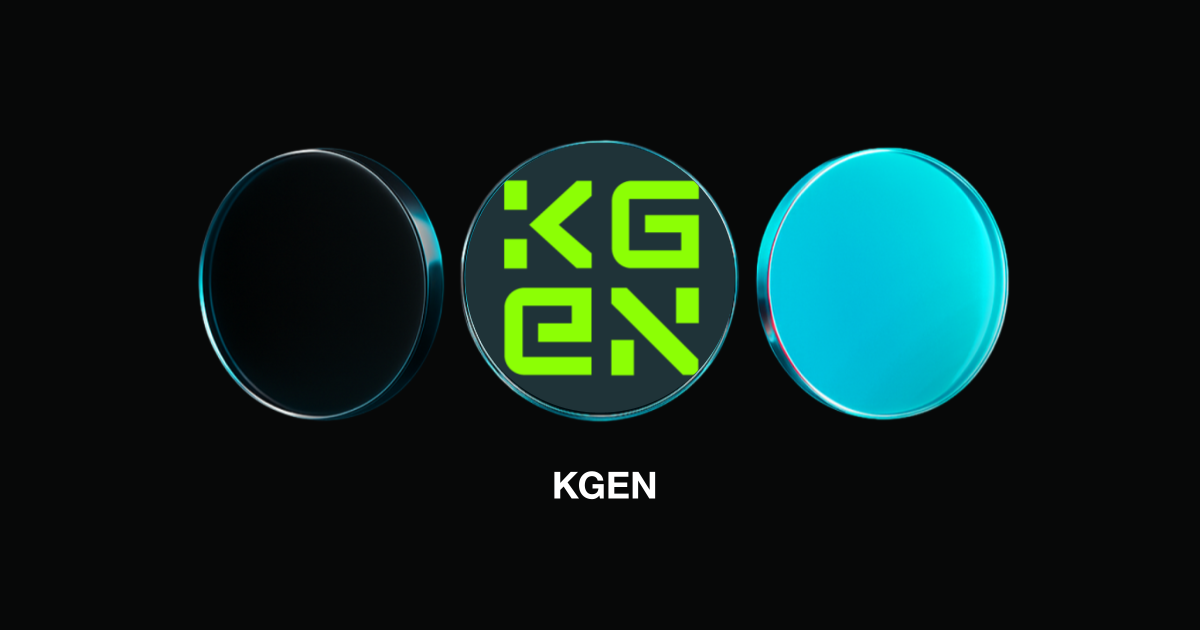
KGEN Crypto Price Forecast: Will KGEN Surge or Crash?
KGEN crypto is creating a buzz in blockchain circles, attracting investors who want more than fleeting hype. Unlike most speculative tokens, KGEN stands out for its real-world business utility, massive user numbers, and ambitious mission to revolutionize the way developers, users, and businesses interact on the blockchain. If you’re considering KGEN as a potential investment or want to understand its volatile price journey, you’re in the right place. This guide covers KGEN’s price performance, utility, ecosystem, partnerships, and what the future could hold for its token price.
Source: CoinMarketCap
KGEN Price Performance: From Launch Volatility to Ecosystem Confidence
KGEN’s launch was highly anticipated, but its token debut was also marked by significant turbulence. Early technical issues—such as delayed presale token swaps, slow or failed cross-chain bridging between Aptos and BSC, and wallet connection glitches—left many investors frustrated. These challenges caused confusion, with some presale buyers reporting missing balances or uncredited airdrop allocations, fueling widespread FUD (fear, uncertainty, and doubt).
This shaky start triggered an immediate market reaction. Within the first hour, KGEN’s price plummeted by 62% from initial highs above $0.71, dropping close to $0.27 as speculative airdrop recipients rushed to sell. Trading volume shrank by over 90% as uncertainty dominated. While some critics voiced concerns about transparency and possible insider advantages, market observers noted that this kind of volatility isn’t uncommon for Aptos-based launches—past tokens like TOMA and OM also experienced sharp price swings before stabilizing.
Recent price action, however, shows renewed bullish momentum, especially as KGEN’s ecosystem and communication improve.
What Is KGEN Crypto? Understanding Its Core Value
KGEN is the native token powering the KGeN Protocol, an all-in-one solution for verified digital identity, app distribution, and blockchain-based rewards. The protocol’s goal is to build the world’s largest “Verified Distribution Layer." In practical terms, KGEN aims to connect developers, real users (not bots), and brands through a blockchain that values authenticity and trust.
The K-Store marketplace is at the heart of the protocol, giving developers a direct channel to launch apps and loyalty programs to a global audience of verified users. Whether it’s distributing Android APKs, launching engagement quests, or running loyalty rewards, brands can trust that their user base is genuine thanks to KGeN’s on-chain verification.
How Does KGEN Work? Real-World Blockchain Utility for Developers, Users, and Businesses
KGEN does much more than serve as a tradable crypto token. It acts as the backbone of an engagement platform designed to connect developers, users, and brands in a transparent, verifiable, and rewarding ecosystem.
Developers benefit by using the K-Store to reach a vast audience of verified real users, moving beyond the fake interactions and bots common on traditional platforms. They can launch, promote, and incentivize genuine engagement with their apps using KGEN as both a reward and a settlement tool. This means their marketing and user acquisition budgets are targeted more efficiently, with each engagement verifiable in real time through the on-chain VeriFI protocol.
For individual users, the KGEN protocol transforms everyday engagement into tangible rewards. By participating in quests, completing tasks, and interacting with ecosystem partners, users earn KCash and KPoints. Every action builds their “Proof of Genuine Engagement” (POGE) reputation score, tracked securely and transparently on-chain. On top of rewards, users can stake KGEN tokens, boost their reputations, and even help guide project direction through decentralized governance.
Businesses and brands view KGEN’s network as a new class of digital marketing. By plugging into the verified user base, brands can design loyalty campaigns and promotions targeting only real, engaged customers—dramatically reducing fraud and maximizing their returns. The protocol’s “Verified Distribution Layer” means every marketing dollar spent goes toward building trust and long-term customer relationships.
By combining these elements, KGEN creates a seamless feedback loop—developers gain meaningful users, users earn real value, and brands engage with trusted audiences, all powered by the KGEN token at the center.
KGEN Tokenomics: Supply, Staking, and Ecosystem Incentives
A closer look at KGEN’s tokenomics reveals a design built for growth and security:
Total Supply: 1 billion KGEN tokens
Initial Circulation: Around 208 million KGEN at launch
Allocation: 20% to ecosystem growth, 24% to core contributors, 17% for investors, 18% set aside for community (airdrops and quests), and 21% to treasury and reserves
Utility: KGEN powers everything from staking rewards (including a share of the protocol’s impressive $60M+ in annualized revenue) to buybacks and governance voting.
By rewarding not just speculation but actual participation, KGEN aims to drive steady demand and reinforce network value for the long term.
Who’s Backing KGEN? Key Investors and Partnerships
KGEN isn’t just another blockchain startup—it’s backed by some of the world’s most established technology investors, including Accel, Prosus Ventures, Jump Capital, and Nexus Venture Partners. Their involvement provides credibility, strategic support, and signals confidence in KGEN’s business model and future growth potential.
KGEN Ecosystem: User Growth and Revenue Power Real Adoption
One of KGEN’s most impressive selling points is its real business traction:
Registered Users: 38.9 million worldwide
Monthly Active Users: 6.6 million in over 60 countries
Annualized Revenue: $60.8 million (2024 data)
Revenue Partners: Over 200 global partners already actively using the network
This scale goes far beyond most new crypto projects, showing that KGEN is fast becoming a true bridge between mainstream commerce and blockchain technology.
KGEN Price Prediction: 2025, 2026, 2027
When it comes to forecasting KGEN’s price, both current market trends and ecosystem fundamentals paint an intriguing picture. While cryptocurrency price predictions are inherently speculative, we can use available data, recent performance, and typical crypto market cycles—especially for Aptos ecosystem launches—to form a reasonable outlook.
Short-Term KGEN Price Prediction 2025:Following its launch dip, KGEN has shown signs of bottoming out and renewed accumulation. If the team continues to address technical issues and improve communication, KGEN could recover toward previous local highs. Analysts are eyeing a short-term price range between $0.40 and $0.70—with potential spikes back to launch levels if trading sentiment and ecosystem announcements remain positive. However, market volatility should be expected, and dips to the $0.25-$0.30 range remain possible, especially if overall crypto sentiment turns risk-off.
Long-Term KGEN Price Prediction 2026, 2027:KGEN’s strong investor backing, real revenue flow, and ecosystem growth could propel the token significantly higher if adoption continues as projected. Should KGEN maintain its revenue growth, increase its real-user base, and foster trust through greater transparency, its token is forecast to reach $1.20 to $1.50 within the next 1-2 years. Some bullish scenarios—including major new partner integrations or broader adoption of the K-Store marketplace—could see KGEN challenge the $2.00 mark. However, these outcomes depend on consistent project delivery and overall market conditions.
Is KGEN Legit?
KGEN stands apart from many speculative tokens due to its substantial real-world business operations, impressive user base, and backing by world-class institutional investors like Accel, Prosus Ventures, Jump Capital, and Nexus Venture Partners. The project has already delivered over 38 million registered users, 6.6 million monthly active users, $60.8 million in annualized revenue, and a fully operational K-Store marketplace where developers distribute real applications and loyalty programs—all of which add credibility and legitimacy.
Furthermore, its on-chain VeriFI protocol provides high-level transparency, ensuring that app engagement, distributions, and user reputation are genuinely tracked and recorded. Regular ecosystem updates and an ambitious roadmap suggest ongoing development rather than a quick cash grab.
However, no crypto project is without risks. KGEN’s presale and initial launch phase were marred by technical difficulties, including delayed token swaps, slow bridging, and wallet issues. This led to short-term panic, with some early participants raising concerns about airdrop eligibility and transparency in token distribution. While these issues are not uncommon for major ecosystem launches (as seen with other Aptos-based projects), they highlight the need for clearer governance, robust support channels, and open communication from the team.
Conclusion: Is KGEN Crypto Worth Investing In?
KGEN offers a rare combination of technical innovation, real-world utility, and strong backing by both users and investment giants. While its token launch was marked by volatility, the protocol’s progress in building a verified digital economy, powering real business transactions, and connecting millions of genuine users sets a foundation for potential long-term growth. As always, prospective investors should do their own research, stay alert to changing conditions, and weigh the risks before making any moves in the fast-changing crypto market.
Bitget akademiyasi2025-10-20 12:06
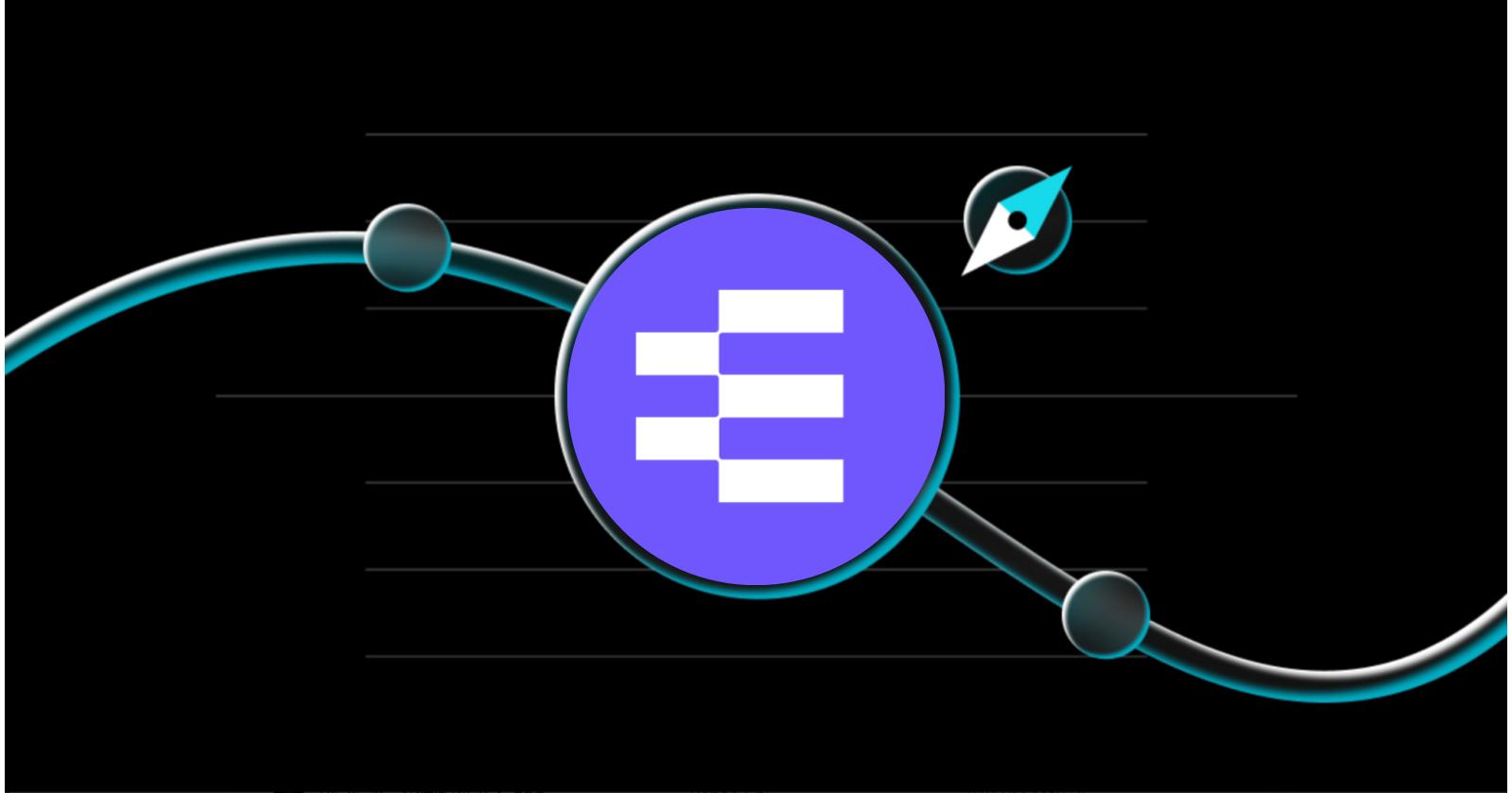
What Is Enzyme (MLN)? The Future of Decentralized Portfolio Management
Decentralized finance (DeFi) has revolutionized how we think about money, lending, and trading — yet one corner of the financial world remains largely untouched: portfolio management. While DeFi protocols now facilitate borrowing, yield farming, and decentralized exchanges with remarkable efficiency, the management of diversified investment portfolios has remained a largely centralized affair. Traditional asset management still depends on trust in institutions, costly intermediaries, and limited transparency, leaving smaller investors on the margins of a system designed for the privileged few.
Amid this shifting landscape, Enzyme Finance (MLN) has emerged as one of the first serious attempts to bring professional-grade portfolio management onto the blockchain. Built on Ethereum and governed by smart contracts, Enzyme allows investors to create, manage, or participate in on-chain investment funds without the need for custodians or brokers. It introduces a framework of mathematical precision and public accountability to an industry once defined by opacity. In essence, Enzyme aims to make portfolio management as open, verifiable, and accessible as any other function of decentralized finance.
What Is Enzyme (MLN)
Enzyme Finance, formerly known as Melon Protocol, is a decentralized platform designed to bring professional asset management to the blockchain. It operates as an open system on the Ethereum network, allowing users to establish and oversee investment funds, referred to as vaults, without intermediaries or custodians. Through the careful use of smart contracts, Enzyme translates the structure of traditional fund management into code, enabling investment rules to be enforced automatically and transparently.
The project was conceived by Mona El Isa, a former Goldman Sachs vice president, and Reto Trinkler, a blockchain engineer, with the intention of “democratizing” asset management. Since its launch, Enzyme has evolved under the guidance of the Enzyme Council, a decentralized autonomous organization (DAO) that now governs the protocol’s development. Every aspect of Enzyme — from its governance to its fee structure — is executed through open-source code. In essence, the platform seeks to replace human trust with mathematical certainty, granting investors direct control over how their capital is allocated and managed within the DeFi ecosystem.
How Enzyme (MLN) Works
Enzyme operates through a network of Ethereum smart contracts that collectively perform the duties once handled by fund managers, custodians, and auditors. The system allows anyone to create a vault—a programmable fund in which assets can be deposited, traded, or withdrawn under rules set by the fund’s creator. Every operation is recorded on-chain, so the entire process of portfolio management—investment, valuation, and accounting—can be observed and verified by any participant. What results is not merely a digital imitation of traditional fund management, but a structure in which trust is transferred from human discretion to open code.
Key features include:
● Vaults: The central element of Enzyme’s architecture. A vault functions as a smart-contract fund that holds digital assets and executes transactions under pre-defined conditions. Managers may set rules for accepted tokens, performance fees, and investment strategies, while investors receive vault shares representing proportional ownership.
● Fund and Infrastructure Layers: The protocol is organized in two tiers. The Fund Layer manages individual vaults and investor interactions, while the Infrastructure Layer—overseen by the Enzyme DAO—provides system-wide services such as price oracles, trading adapters, and fee-conversion engines.
● DeFi Integrations: Vaults can interact directly with major decentralized protocols including Uniswap, Aave, and Yearn Finance, enabling lending, staking, and liquidity provision without leaving the Enzyme environment.
● Transparency and Security: All assets remain under smart-contract control, and all actions are publicly auditable. This design minimizes counter-party risk and removes the need for custodial trust, while regular audits strengthen confidence in the system’s integrity.
Through this layered and verifiable mechanism, Enzyme replaces the administrative structure of a fund with a self-executing digital framework—efficient, transparent, and governed entirely by code.
Enzyme (MLN) Tokenomics
MLN is the native utility token of the Enzyme ecosystem, serving as both the operational medium and the governance instrument of the protocol. It is used to pay protocol and management fees, fund system maintenance, and grant token holders a voice in governance through the Enzyme Council — the decentralized body that oversees protocol upgrades and integrations. In this way, the token’s worth is anchored not in speculation but in the network’s actual utility and participation.
The token’s design follows a measured mint-and-burn model, intended to sustain long-term development while maintaining equilibrium within the supply. Approximately 300,600 MLN are newly minted each year to finance audits, platform improvements, and other operational needs. At the same time, fees generated from vault activity are collected in MLN and a portion of these tokens are permanently burned, counteracting inflation. This cyclical process encourages scarcity as platform adoption grows. Over time, it ensures that the prosperity of Enzyme — its vault activity, integrations, and total assets under management — is closely mirrored in the value and circulation of MLN itself.
Enzyme (MLN) Price Prediction for 2025, 2026–2030
As of this writing, Enzyme (MLN) trades at roughly $11, supported by a circulating supply of 2.98 million tokens. Its value remains modest, yet its controlled issuance and deflationary burn model suggest that gradual appreciation is possible if adoption continues to strengthen. The following estimates are speculative and assume steady growth in vault activity, favourable market conditions, and continued protocol integrity:
● 2025: MLN may rise to between $11 and $13, reflecting moderate adoption and renewed confidence in DeFi-based asset management.
● 2026: With greater usage and fee burns offsetting annual token issuance, the price could advance to around $14–18.
● 2027: Broader integration with major DeFi protocols might lift MLN toward $20–25, signalling maturing network demand.
● 2028: If on-chain assets under management expand meaningfully, MLN could approach $28–35 as investors reward sustained growth.
● 2029: A period of strong institutional participation may carry the token into the $40–50 range, supported by higher fee volumes.
● 2030: Under optimistic conditions—wider adoption, regulatory clarity, and consistent burn activity—MLN might reach $55–70, representing a fully realized stage of platform maturity.
These projections remain conjectural and subject to the volatility inherent in cryptocurrency markets. The true measure of Enzyme’s future value will rest not in forecasts but in the tangible use of its protocol across the decentralized investment landscape.
Conclusion
Enzyme Finance (MLN) illustrates how the precision of code can elevate the art of portfolio management. By combining decentralized governance, transparent vaults, and a carefully balanced token economy, it delivers a framework that unites the rigor of traditional finance with the openness of blockchain. Each transaction, rule, and decision exists in clear view — a striking contrast to the obscurity of conventional systems.
As decentralized finance continues to unfold, Enzyme’s quiet strength lies in its structure: deliberate, transparent, and elegantly self-sustaining. Its role may soon extend beyond a single platform to influence how investment itself is conceived in the digital age. And as innovation advances, one cannot help but wonder — when code begins to manage capital with perfect clarity, what new forms of trust might the world discover next?
Disclaimer: The opinions expressed in this article are for informational purposes only. This article does not constitute an endorsement of any of the products and services discussed or investment, financial, or trading advice. Qualified professionals should be consulted prior to making financial decisions.
Bitget akademiyasi2025-10-20 09:03

Ethereum Price Prediction October 2025: Between Fear and FOMO – What’s Next for ETH?
October has proven restless for Ethereum. What began as a continuation of the year’s earlier strength soon gave way to sharp reversals and wavering investor confidence. In the first weeks of the month, ETH broke above $4,700, its ascent fuelled by robust institutional demand and a surge in inflows to newly established spot ETFs. Yet that optimism unraveled swiftly. A turn in global market sentiment—spurred by fears of tightening liquidity and geopolitical stress—sent ETH tumbling toward $3,800. Within days, the tone across markets shifted from eager speculation to caution, if not outright retreat.
This moment, like others in Ethereum’s history, seems suspended between two opposing forces: fear and the fear of missing out. Technical patterns, though still consulted, appear less persuasive than they once did. What now moves Ethereum are matters of substance—network developments, monetary policy, regulation, and the broader question of crypto’s evolving role in global finance. In the following sections, we will examine the recent price action, fundamental news within the Ethereum ecosystem, macroeconomic signals, prevailing sentiment, and the range of forecasts that attempt to illuminate what lies ahead.
October 2025 Price Performance and Volatility
Ethereum (ETH) Price
Source: CoinMarketCap
Ethereum’s performance in October has reflected the broader market’s uneasy temperament. In the early days of the month, ETH rose with conviction, pushing past $4,700 amid a tide of institutional buying and ETF-related optimism. Yet the rally proved unsustainable. By mid-month, a sharp and sudden retreat had taken hold, dragging ETH down to the vicinity of $3,800. The reversal came swiftly, prompted by renewed concern over global credit conditions and a deterioration in appetite for risk assets more broadly. Those who had entered late in the rally were left rattled; long-term holders, meanwhile, found themselves once again testing their resolve.
Despite the volatility, Ethereum has not entirely lost its footing. Prices recovered modestly in the days following the decline, with ETH returning to levels near $4,100 by the third week of October. Market data suggests that a significant portion of the earlier sell-off may have stemmed from short-term liquidation and panic rather than any material change in Ethereum’s underlying fundamentals. ETF inflows, while momentarily disrupted, had already contributed close to $2 billion in the days preceding the drop. While recent price swings have introduced uncertainty, they have not, thus far, erased the optimism that helped fuel this year’s rally.
Recent Developments Within the Ethereum Ecosystem
While Ethereum’s price has fluctuated sharply this month, the foundation beneath the network continues to evolve. October has brought a series of noteworthy developments—technical, institutional, and analytical—that speak to the project’s resilience and long-term ambitions:
● Fusaka upgrade enters advanced testing: Ethereum’s next major upgrade, Fusaka, completed its second test phase on the Sepolia testnet earlier this month. A final dry run is scheduled for October 28 on the Hoodi testnet, with mainnet deployment anticipated in early December. The upgrade includes proposals to triple the block gas limit and implement infrastructure improvements such as PeerDAS and Verkle Trees, designed to expand capacity and reduce transaction costs.
● ETF inflows continue despite volatility: Newly approved spot Ether ETFs saw nearly $2 billion in inflows during the first eight days of October. Although mid-month market turmoil led to short-term outflows—estimated about $430 million—analysts view this as a temporary response rather than a reversal of institutional interest. Broadly speaking, capital continues to move toward Ethereum from larger investment firms.
● Analysts issue long-term bullish forecasts: Citizens Bank released a forecast projecting that ETH could rise above $10,000 within two years. Their report points to tightening supply driven by increased staking, rising treasury holdings, and the ongoing burn mechanism introduced by EIP-1559. Based on these trends, they estimate Ethereum’s liquid supply may fall below 50 million coins by 2027.
These developments, while less immediately visible than price fluctuations, reinforce Ethereum’s position as a maturing financial platform. In the midst of market noise, the network continues to build.
Macroeconomic Pressures and Ethereum’s Market Position
Ethereum’s recent price swings cannot be viewed in isolation. Broader economic and policy developments have played a central role in shaping market sentiment this October. As central banks weigh their next moves, and trade tensions rise, Ethereum—like much of the crypto market—has responded sharply to signals well beyond its own ecosystem.
Key influences include:
● Shifting interest rate expectations: U.S. inflation has cooled, and labour data suggests a slowing economy. Federal Reserve officials, including Governor Christopher Waller, have indicated support for a modest rate cut in late October. Easing policy could lift appetite for risk assets, including Ether.
● Trade tensions and risk aversion: The U.S. recently announced new tariffs on Chinese goods, set to take effect from November 1. The news sparked a global market pullback, with Ethereum’s decline closely aligned. Such macro shocks continue to move crypto markets in real time.
● Gradual regulatory progress: In the U.S., bills like the GENIUS and CLARITY Acts aim to provide legal definitions for digital assets. The EU’s MiCAR framework and UK regulations are also advancing. While incomplete, this progress has improved visibility for institutional participants.
Ethereum’s market position remains tied to these global forces—benefiting from clarity and easing, yet vulnerable to shocks and uncertainty.
Market Sentiment – Fear, FOMO, and the Crowd’s Mood
Fear and Greed Index Chart
Source: CoinMarketCap
October has stirred conflicting emotions among Ethereum investors. After months of steady optimism, the sudden price reversal mid-month jolted sentiment. The balance between fear and FOMO has become more pronounced, with investors divided over whether recent weakness marks a temporary setback or the start of a deeper correction.
● Fear surges following the correction: The Crypto Fear & Greed Index dropped sharply, touching its lowest levels of the year around October 17. Social media narratives turned cautious, with traders liquidating positions and stablecoin volumes rising—often a sign of capital moving to safety.
● Institutional positioning remains steady: Despite retail unease, institutional flows into ETH products have remained largely intact. Analysts noted that most of the selling pressure came from overleveraged retail accounts, while long-term investors used the dip as a buying opportunity.
● Emerging optimism among seasoned voices: Well-known market participants, such as Arthur Hayes and Tom Lee, expressed confidence in Ethereum’s long-term potential. Hayes described the pullback as a possible accumulation window, while Lee reaffirmed a $10,000 ETH target by year-end, highlighting Ethereum’s underlying strength.
● On-chain data signals recovery in confidence: Metrics from firms like Glassnode suggest a return to ‘belief’ phase behavior, with fewer holders selling at a loss and long-term wallets resuming accumulation.
Though shaken, Ethereum’s investor base remains attentive rather than defeated. Sentiment is fragile, yet far from collapsed.
Ethereum Price Prediction October 2025: Can ETH Reach $5,000?
As Ethereum hovers near the $4,000 mark, the prospect of reclaiming the $5,000 level by year’s end has become a subject of wide speculation. Several short-term models place Ether’s near-term trajectory between $4,300 and $4,700, assuming stable macro conditions and continued interest from institutional investors. Historical data also offers a modest tailwind—ETH has, in past years, tended to post gains in the final quarter, often exceeding 20%. If such seasonal patterns were to hold, $5,000 could be reached, though not without assistance from broader market sentiment.
Much of the current optimism depends on forces external to Ethereum’s protocol. Spot ETF inflows have brought new capital into the market, and a widely anticipated interest rate cut by the U.S. Federal Reserve could improve risk appetite. At the same time, the network’s fundamentals—such as declining liquid supply due to staking and token burns—provide longer-term support. Analysts at Citizens Bank, among others, have pointed to a potential climb beyond $10,000 over the next two years, citing these structural shifts as key drivers.
Still, the path forward is far from guaranteed. Ethereum remains vulnerable to global headwinds, including regulatory ambiguity, geopolitical strain, and credit market stress. For now, the $5,000 threshold stands not as a prediction, but as a pivot point—within reach under the right conditions, but elusive in a market still marked by hesitation.
Conclusion
October has underscored the delicate balance Ethereum must navigate—between structural strength and external fragility, between investor conviction and market fatigue. While the network continues to evolve through upgrades like Fusaka and draws sustained interest from institutional capital, its price remains tethered to broader currents in policy, trade, and sentiment. The pullback to near $3,800 reminded many that crypto markets, for all their promise, remain acutely sensitive to global instability.
Still, the resilience shown in the weeks since suggests that Ethereum has not lost its footing. ETF inflows, steady long-term forecasts, and on-chain signals all point to a core of support beneath the surface. Whether ETH breaks through $5,000 before year’s end—or lingers below while awaiting firmer ground—will depend less on the mechanics of the protocol and more on how the world beyond crypto unfolds.
In the meantime, Ethereum remains in motion: not frozen by fear, nor swept away by euphoria. For investors, the present moment may offer more questions than clarity—but it also offers time to prepare for what comes next.
Disclaimer: The opinions expressed in this article are for informational purposes only. This article does not constitute an endorsement of any of the products and services discussed or investment, financial, or trading advice. Qualified professionals should be consulted prior to making financial decisions.
Bitget akademiyasi2025-10-18 14:39
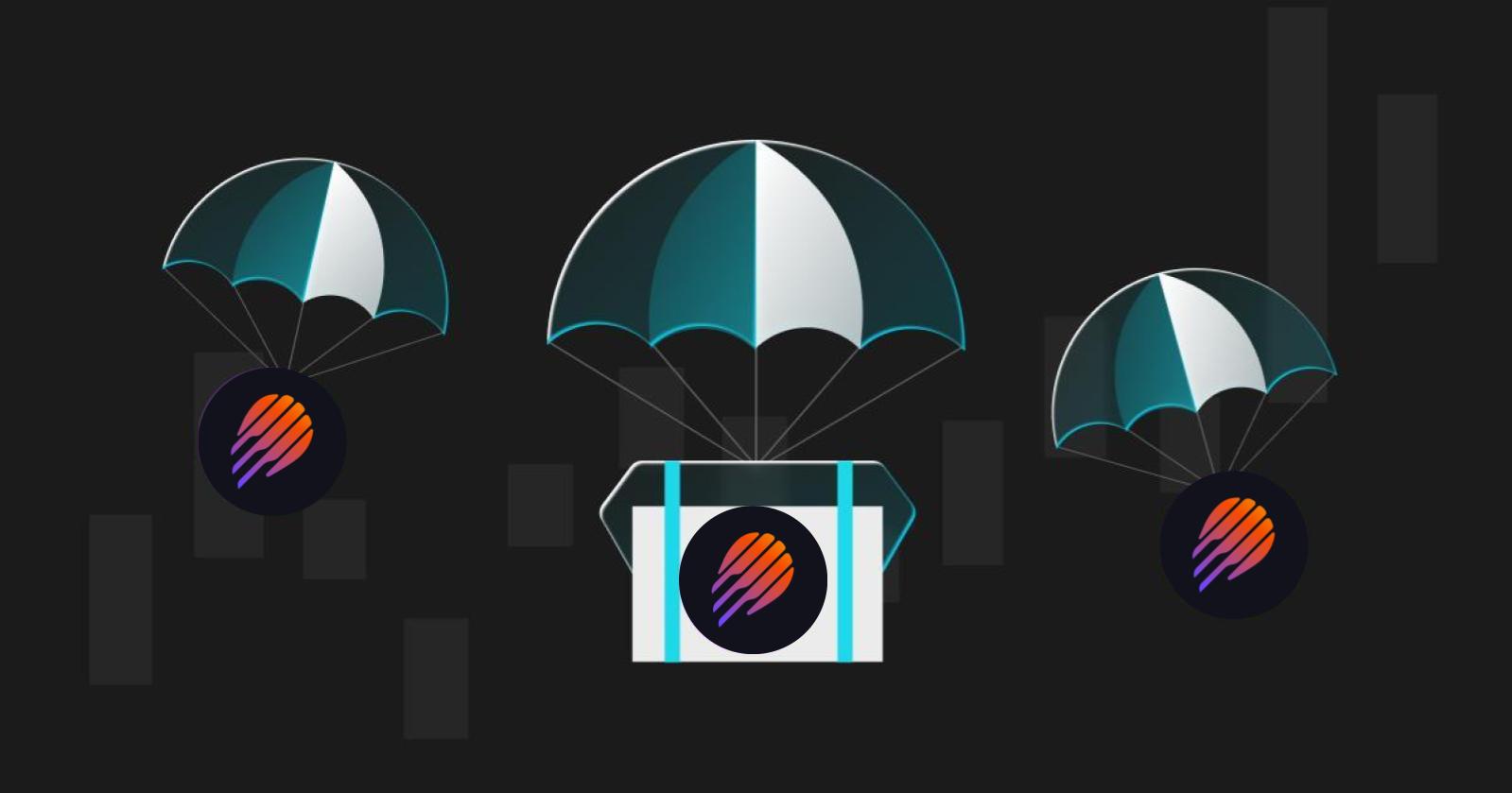
Meteora Airdrop and Listing Date Confirmed for October 23, 2025: Everything You Need to Know
The countdown is on for one of Solana’s most anticipated events of the year — the launch of Meteora (MET) . After months of speculation, the project has officially confirmed its airdrop and token listing date for October 23, 2025, setting the stage for what could become one of the biggest DeFi moments of the year. Meteora is a bold attempt to reshape how liquidity and community ownership work on Solana, rewarding early adopters while showcasing a fresh approach to sustainable token distribution. Excitement is building fast as investors, traders, and airdrop hunters prepare for what many are calling “the Solana event to watch this quarter.”
What makes this launch stand out is the balance between transparency, innovation, and community focus. Meteora is going all in with a fully unlocked airdrop — letting real users, not speculators, take the lead. Backed by a proven liquidity engine and an active ecosystem, the upcoming Token Generation Event (TGE) is more than just a milestone for Meteora — it’s a test case for whether DeFi can evolve beyond short-term hype into long-term stability. With launch day around the corner, all eyes are on Meteora to see if it can deliver on that promise.
What Is Meteora (MET)?
Meteora (MET) is a decentralized liquidity protocol built on the Solana blockchain, designed to make liquidity more efficient, adaptive, and community-driven. In simple terms, it’s a platform that allows traders and projects to access smart, automatically managed liquidity pools — similar to Uniswap or Curve, but optimized for Solana’s speed and low fees. By dynamically adjusting liquidity positions and fees based on market volatility, Meteora ensures smoother trading, higher capital efficiency, and better yields for liquidity providers.
The project was founded in 2021 as an evolution of Mercurial Finance, a Solana-based stable-asset liquidity protocol. It was co-founded by Ben Chow, SIONG and Meow. Their goal was to build a next-generation liquidity infrastructure for Solana — one that could scale beyond stablecoins and support a wide variety of assets and trading strategies. Over time, Meteora’s model evolved to integrate dynamic pools, yield vaults, and liquidity automation tools that make DeFi participation simpler for users and more sustainable for projects.
How Meteora (MET) Works
Meteora operates as a smart liquidity engine built to optimize how capital flows within the Solana DeFi ecosystem. Instead of relying on static liquidity pools — where funds simply sit and wait for trades — Meteora uses automation to keep liquidity constantly active, efficient, and profitable. Its system reacts to real-time market data, ensuring both traders and liquidity providers (LPs) get better outcomes with less manual management.
● Dynamic Liquidity Market Maker (DLMM): Meteora’s core feature automatically adjusts trading fees and liquidity ranges depending on market volatility. When prices move quickly, DLMM narrows liquidity bands and raises fees to protect LPs from impermanent loss. During calmer periods, it widens the range and lowers fees to attract more trading activity.
● Dynamic Vaults: These vaults act as automated yield optimizers. Users can deposit assets (like SOL, USDC, or other tokens), and Meteora intelligently allocates them across pools or lending platforms to generate consistent returns without constant rebalancing.
● Liquidity Distributor System: Introduced ahead of the MET token launch, this system distributes rewards through liquidity positions instead of direct token drops. It encourages users to stay invested and earn trading fees while maintaining healthy liquidity across pools.
● Ecosystem Integration: Meteora isn’t just a DEX — it’s a liquidity foundation for new Solana projects. By providing plug-and-play liquidity tools, it allows meme coins, utility tokens, and DeFi apps to launch smoothly without depending on centralized exchanges or risky farming incentives.
Meteora (MET) Tokenomics
Meteora (MET) Token Allocation
The MET token serves as both a utility and governance token that powers the entire Meteora ecosystem. It underpins every major function of the protocol — from rewarding liquidity providers and vault participants to enabling community-driven decision-making. Designed with sustainability and transparency in mind, the token aims to create a long-term incentive structure where both developers and users benefit from the platform’s growth. By using MET, participants can earn rewards, stake for governance rights, and contribute to maintaining balanced liquidity across Meteora’s pools and vaults.
Unlike many DeFi tokens that rely on speculative emissions or short-term incentives, MET is structured around real yield and ongoing utility. The protocol’s innovative Liquidity Distributor ensures that rewards are tied to active participation rather than passive holding, encouraging users to keep their tokens in productive use. This approach not only enhances liquidity depth across the Solana ecosystem but also aligns the interests of traders, liquidity providers, and the Meteora team — laying the groundwork for a more stable, community-driven financial network.
Upcoming Airdrop and Listing: What You Need to Know
The Meteora (MET) airdrop is one of the most anticipated events in the Solana DeFi ecosystem, designed to reward genuine community participation and long-term liquidity support. It’s a transparent, no-lockup distribution that gives real users — not insiders — a chance to share in Meteora’s growth. Here’s everything you need to know:
1. Who’s Eligible
Active participants in the Meteora ecosystem, including liquidity providers, traders, and users who earned points through Season 1 and Season 2 of the LP Stimulus Program, are eligible. Additionally, Mercurial (MER) holders and Jupiter (JUP) stakers will receive allocations as part of partnership rewards.
2. How Airdrop Amounts Are Calculated
Airdrop amounts are determined by a points-based system. Users earn points for generating trading fees, maintaining liquidity positions, and engaging in ecosystem activities. The more active the participation, the higher the airdrop allocation.
3. When the Snapshot Was Taken
The official snapshot of eligible wallets was taken on June 30, 2025. Any activity after that date contributes to future reward rounds, not the October airdrop.
4. No Vesting Period
All airdropped MET tokens are fully unlocked at launch. Recipients will have complete control from day one — they can hold, trade, or use their tokens within Meteora’s liquidity pools immediately after the Token Generation Event (TGE).
5. When Is Meteora (MET) Listing Date?
The Token Generation Event (TGE) and official listing date are both set for October 23, 2025. On that day, users can claim their MET tokens directly through the official Meteora interface, and trading will go live on supported exchanges shortly after.
MET Token Price Prediction: What Could Happen After Launch?
With nearly half of its total supply unlocked at launch, Meteora (MET) is expected to experience sharp volatility in its first few days of trading. Early projections place MET’s initial price between $0.0015 and $0.0022, giving it a market cap of roughly $1.5–$2.2 million at launch. Short-term fluctuations are likely as airdrop recipients take profits and new buyers enter the market.
In the following months, MET’s value will depend on real ecosystem adoption and liquidity activity. Analysts outline three potential paths:
● Bullish: Strong trading volume and adoption push MET toward $0.004–$0.005.
● Neutral: The token stabilizes around $0.002–$0.003 as the market matures.
● Bearish: Heavy selling pressure drags MET below $0.0015 before recovery.
It’s important to note that these figures are purely speculative predictions, not financial advice. Actual prices will depend on market sentiment, trading volume, and the broader performance of Solana’s DeFi ecosystem.
Conclusion
As October 23, 2025 approaches, excitement around Meteora (MET) continues to build — and for good reason. The project isn’t just introducing a new token; it’s unveiling a bold experiment in how liquidity, community, and innovation can work together on Solana. With a fully unlocked airdrop, a real-yield foundation, and an ecosystem built for active participation, Meteora is pushing DeFi toward something bigger — something more sustainable.
Still, the real story begins after launch. Will MET become Solana’s next breakout success, or simply another moment in the cycle of crypto hype? That’s the mystery everyone wants to see unfold. One thing’s certain — when the clock strikes on October 23, all eyes will be on Meteora, and the outcome could redefine what a fair launch truly means in DeFi.
Disclaimer: The opinions expressed in this article are for informational purposes only. This article does not constitute an endorsement of any of the products and services discussed or investment, financial, or trading advice. Qualified professionals should be consulted prior to making financial decisions.
Bitget akademiyasi2025-10-16 16:56
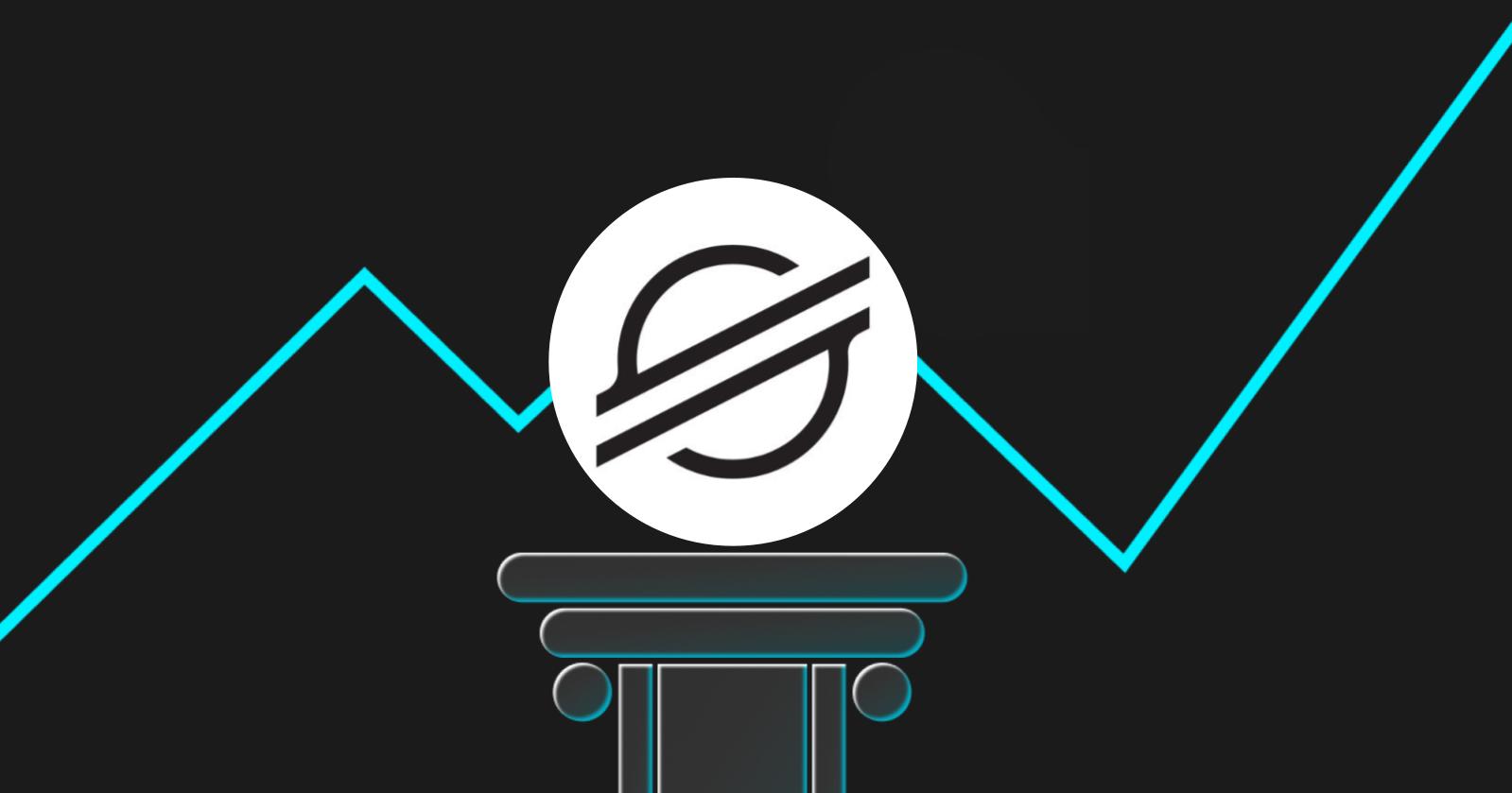
Stellar (XLM) Price Prediction for 2025, 2026–2030
Stellar (XLM) is one of the most enduring blockchain projects in the cryptocurrency landscape, created in 2014 by Jed McCaleb to enable fast, low-cost international payments. The Stellar network connects banks, payment providers, and individuals, allowing users to move money across borders in seconds for just a fraction of a cent in fees. Its focus on real-world utility—especially in remittances and microtransactions—has earned it a solid reputation as a practical and scalable blockchain solution rather than a purely speculative asset.
Over time, Stellar has evolved from a simple payment protocol into a more versatile financial platform. With the launch of Soroban smart contracts, greater integration of USDC stablecoin rails, and partnerships with institutions like MoneyGram and Franklin Templeton, the network is expanding into decentralized finance (DeFi) and tokenized real-world assets. As the ecosystem matures, many investors are looking ahead to how these developments could impact XLM’s price trajectory between 2025 and 2030—and what factors might drive its next big move in the crypto market.
2025 Price Prediction
In 2025, Stellar is likely to benefit from the rollout of Soroban smart contracts and growing USDC adoption, but its price will still depend on overall crypto market conditions and real-world usage growth.
Bearish Scenario: If market sentiment remains weak after Bitcoin’s halving and adoption slows, XLM could trade between $0.30 – $0.36. This assumes limited network expansion and cautious investor behavior.
Neutral Scenario: With steady use of Stellar’s payment network and stablecoin rails, XLM may hover around $0.37 – $0.40. The network maintains relevance but experiences moderate, sustainable growth.
Bullish Scenario: In a strong market driven by higher on-chain activity and new partnerships, XLM could reach $0.41 – $0.45. Strong DeFi participation and increased remittance volume would support this outcome.
2026 Price Prediction
By 2026, Stellar’s performance will likely hinge on how well its Soroban ecosystem grows and how much adoption it gains among financial institutions. As more businesses explore blockchain-based settlements, XLM’s role in cross-border payments could expand—but broader market trends will still be the key driver.
Bearish Scenario: If global crypto sentiment cools or adoption slows, XLM could trade between $0.30 – $0.35. Limited developer activity or competition from faster networks may keep prices flat.
Neutral Scenario: With steady network growth and consistent transaction volume, XLM may average $0.36 – $0.40. Stellar remains relevant in remittances and tokenized assets but experiences moderate gains.
Bullish Scenario: Strong business integrations and a thriving Soroban DeFi ecosystem could push XLM toward $0.42 – $0.48. Broader crypto recovery and institutional adoption would further reinforce this upward trend.
2027 Price Prediction
By 2027, Stellar could be entering a more mature growth phase, with its smart contract capabilities and payment infrastructure fully established. The network’s value will depend on user adoption, liquidity, and competition within the payments and DeFi sectors.
Bearish Scenario: If market enthusiasm fades or other payment-focused blockchains capture attention, XLM may stay around $0.55 – $0.65. Limited ecosystem expansion would restrict long-term upside.
Neutral Scenario: With steady on-chain activity and wider use of Soroban apps, XLM could average $0.70 – $0.80. This assumes balanced growth in remittances, tokenized assets, and stablecoin volume.
Bullish Scenario: A strong global crypto cycle, combined with large-scale institutional adoption, could lift XLM to $0.90 – $1.10. At this point, Stellar would likely be recognized as one of the leading networks for real-world financial applications.
2028 Price Prediction
By 2028, Stellar may see broader adoption as global finance increasingly embraces blockchain solutions. Its low-cost, fast transactions and integration with stablecoins like USDC could make it a core player in tokenized finance and cross-border settlements.
Bearish Scenario: If crypto markets remain subdued or adoption plateaus, XLM could trade between $1.00 – $1.15. Growth would mainly come from steady network usage rather than speculation.
Neutral Scenario: With expanding use of Soroban smart contracts and partnerships in remittance or fintech sectors, XLM may average $1.20 – $1.35. Continued institutional engagement would sustain gradual appreciation.
Bullish Scenario: In a strong bull market driven by massive DeFi participation and RWA tokenization, XLM could rise to $1.50 – $1.70. This assumes Stellar cements its position as a leading payment and asset-transfer network worldwide.
2029 Price Prediction
By 2029, Stellar could be a fully mature blockchain ecosystem with strong real-world adoption in payments, tokenized funds, and cross-border transactions. Its performance will largely depend on global crypto regulation and continued integration by financial institutions.
Bearish Scenario: If competition intensifies or global regulations tighten, XLM may trade around $1.40 – $1.60. The network would remain active, but investor sentiment could limit major price gains.
Neutral Scenario: With sustainable growth and a solid presence in both DeFi and traditional finance, XLM could reach $1.60 – $1.85. This assumes balanced market conditions and steady user expansion.
Bullish Scenario: In a strong macro and crypto environment, XLM could surge to $2.00 – $2.30, supported by mainstream adoption of Stellar-based payment systems and tokenized assets.
2030 Price Prediction
By 2030, Stellar could be a well-established global blockchain network, deeply integrated into payment systems, DeFi, and tokenized real-world assets. Its long-term value will depend on sustained adoption, regulation, and competition within the digital finance landscape.
Bearish Scenario: If global crypto regulation tightens or growth slows, XLM may trade around $2.00 – $2.30. The network would remain widely used but show limited upside due to market maturity and reduced speculation.
Neutral Scenario: With consistent adoption by fintechs, banks, and developers, XLM could reach $2.40 – $2.70. Stellar would be viewed as a stable, utility-driven blockchain with moderate long-term appreciation.
Bullish Scenario: In a highly favorable market with massive mainstream adoption, XLM might rise to $3.00 – $3.30. This assumes Stellar becomes a key infrastructure layer for cross-border payments and tokenized assets on a global scale.
Key Factors Influencing Stellar’s Future Price
The long-term success of Stellar (XLM) will depend on how effectively it balances innovation, adoption, and competition in a rapidly evolving financial landscape. Below are the main factors that could shape its price trajectory through 2030 and beyond.
Network Upgrades and Technology: The rollout of Soroban smart contracts has expanded Stellar’s capabilities beyond payments, allowing developers to build DeFi and Web3 applications. Future protocol upgrades that improve speed, scalability, and interoperability will directly impact network utility — and by extension, XLM demand.
Adoption and Partnerships: Stellar’s collaborations with companies like MoneyGram and Franklin Templeton showcase its growing role in real-world finance. Broader adoption by banks, fintechs, and remittance providers will increase transaction volume and create sustained demand for XLM as a bridge asset.
Stablecoin and Tokenization Growth: As stablecoins like USDC on Stellar gain traction, transaction volume could rise significantly. The tokenization of real-world assets (RWAs) — such as funds, bonds, or commodities — would also boost on-chain activity and fee revenue, supporting long-term value growth.
Regulatory Environment: Global crypto regulations will remain a decisive factor. Clear and favorable policies toward blockchain-based payments could accelerate adoption, while restrictive rules or uncertainty may limit institutional participation.
Market Sentiment and Macro Trends: Broader crypto market cycles, inflation trends, and global economic conditions influence capital flows into digital assets. Historically, XLM’s performance has mirrored overall market optimism — performing best during bull cycles following Bitcoin halvings.
Competition: Stellar operates in a highly competitive space alongside Ripple (XRP), Cardano (ADA), and other payment-focused blockchains. How effectively Stellar differentiates itself through lower fees, faster transactions, and better developer tools will determine its ability to capture long-term market share.
Conclusion
Stellar (XLM) continues to prove itself as one of the most practical and mission-driven blockchain projects, focusing on real-world use cases like remittances, stablecoins, and financial inclusion. With the addition of Soroban smart contracts, expanding partnerships, and integration of USDC, the network is gradually evolving from a simple payment protocol into a full financial ecosystem.
While short-term price movements will depend on broader market conditions, Stellar’s long-term outlook remains promising. Under conservative assumptions, XLM could trade near $2.00 by 2030, while optimistic scenarios point toward levels above $3.00 if adoption accelerates. As always, investors should approach these predictions with caution — the crypto market remains volatile, and success will ultimately hinge on real-world adoption, network utility, and regulatory clarity.
Disclaimer: The opinions expressed in this article are for informational purposes only. This article does not constitute an endorsement of any of the products and services discussed or investment, financial, or trading advice. Qualified professionals should be consulted prior to making financial decisions.
Bitget akademiyasi2025-10-16 10:14

What Is YieldBasis (YB)? The DeFi Protocol Bringing Stable Returns to Volatile Markets
The world of decentralized finance (DeFi) has opened new doors for crypto investors—but not without trade-offs. Volatility, complex mechanics, and the ever-present threat of impermanent loss have made yield farming feel more like risk management than passive income. For example, even when markets move in your favor, providing liquidity to automated market makers (AMMs) can still underperform simply holding your tokens.
In this environment, the demand for more stable, predictable returns has never been higher. That’s where YieldBasis (YB) steps in—a next-generation DeFi protocol designed to bring sustainable yields to volatile crypto assets like BTC. Backed by Curve Finance’s infrastructure and launched in 2025, YieldBasis offers a novel way to earn on-chain yield without suffering from the usual “impermanent loss drag.” So, what exactly is YieldBasis, and how does it work? Let’s break it down.
What Is YieldBasis (YB)?
YieldBasis (YB) is a decentralized finance (DeFi) protocol designed to help crypto holders earn stable on-chain yields without facing impermanent loss. It was launched in early 2025 by Michael Egorov, the founder of Curve Finance, and is deeply integrated into the Curve ecosystem.
The core innovation of YieldBasis lies in its use of leveraged liquidity provisioning. Instead of traditional AMMs where liquidity providers (LPs) are exposed to shifting asset ratios, YieldBasis constructs positions that track the price of the underlying asset (like BTC) 1:1. This is achieved by pairing deposited BTC with a matching dollar value of crvUSD (Curve’s native stablecoin) and automatically maintaining a 2× leverage ratio.
Users receive special “wrapped” tokens such as ybBTC when they deposit BTC. These tokens represent a share in a dynamically rebalanced, leveraged liquidity pool. As BTC moves in price, the position adjusts automatically to maintain the 2× target and avoid the performance drag of impermanent loss.
YieldBasis launched with strong community backing and support from Curve DAO, even receiving a significant crvUSD credit line to power its pools. Early adoption has been focused on Bitcoin, with plans to expand into ETH and other assets using the same design framework.
How YieldBasis (YB) Works
YieldBasis is engineered to give users exposure to crypto price movements while avoiding the impermanent loss typically associated with liquidity provision. It does this by creating 2× leveraged liquidity positions using Curve’s AMM pools and rebalancing them dynamically. These positions are designed to track the underlying asset's value 1:1, so when BTC rises, your position rises equally—unlike in traditional AMMs where LPs lose ground due to shifting asset ratios.
Here’s how it works in practice:
● Deposit BTC: Users start by depositing BTC into the YieldBasis protocol.
● 2× Leverage Setup: YieldBasis borrows an equivalent value in crvUSD (Curve’s native stablecoin) and pairs it with the deposited crypto, creating a 50/50 BTC–crvUSD liquidity position. This setup creates a 2× leveraged exposure.
● Auto-Rebalancing Mechanism: As prices shift, the protocol maintains the 2× leverage ratio using a rebalancing AMM and a “VirtualPool” system. These mechanisms rely on arbitrage incentives to restore the target leverage without user intervention.
● Wrapped Token Issuance (ybBTC): In return for their deposit, users receive wrapped tokens like ybBTC, representing their position in the leveraged LP.
● Fee Generation and Yield: Because the funds are deployed in active trading pools, users earn a share of trading fees.
● Optional Staking for YB Rewards: Users can also stake their yb-tokens in the protocol to earn additional YB tokens as rewards, layering on an extra incentive for liquidity provision.
By combining leverage, automated rebalancing, and fee accrual into one seamless system, YieldBasis enables a “HODL-friendly” yield strategy—ideal for users who want to earn without sacrificing upside or taking on unnecessary risk from impermanent loss.
YieldBasis (YB) Tokenomics
YieldBasis (YB) Token Allocation
The YB token serves as the backbone of the YieldBasis ecosystem, functioning as both a utility and governance asset. With a fixed maximum supply of 1 billion tokens, YB is used to incentivize liquidity providers, reward long-term protocol participants, and power the protocol’s decision-making processes. At launch, around 87.9 million YB were in circulation—just under 9% of the total supply—while the rest is subject to vesting schedules or reserved for protocol development and ecosystem growth. Like many next-gen DeFi projects, YieldBasis adopted a vote-escrow model, allowing users to lock their YB tokens in exchange for veYB (vote-escrowed YB), which gives them governance rights and a share of trading fees.
Beyond governance, YB plays a central role in staking and emissions. Users who deposit assets like BTC into YieldBasis pools receive ybBTC tokens. By staking these LP tokens, users can earn additional YB rewards over time. Those who also hold veYB receive bonus incentives, helping reinforce long-term alignment between liquidity providers and protocol health. This model is designed to gradually reduce token emissions, ensuring sustainability while rewarding early adopters and active participants in the ecosystem.
YieldBasis (YB) Price Prediction for 2025, 2026–2030
YieldBasis (YB) Price Today
Source: CoinmarketCap
As of this writing, YieldBasis (YB) is trading around $0.72 following its launch on major exchanges. Price forecasts, of course, remain speculative and depend heavily on protocol adoption, market sentiment, and broader crypto trends.
● 2025 Price Prediction: YieldBasis (YB) may trade between $0.68 and $0.85 as it navigates post-launch volatility, token unlocks, and early market speculation.
● 2026 Price Prediction: With growing adoption and demand for veYB, the token could rise to around $0.90 to $1.40 as more liquidity flows into the protocol.
● 2027 Price Prediction: Assuming continued expansion and protocol maturity, YB may reach $1.30 to $2.00, supported by deeper pool usage and yield stability.
● 2028 Price Prediction: During a potential bull cycle and broader DeFi growth, YB could climb to $1.80 to $2.80, especially with Layer-2 or cross-chain integration.
● 2029 Price Prediction: As token emissions decline and governance utility strengthens, the price may appreciate to between $2.50 and $3.50.
● 2030 Price Prediction: If YieldBasis becomes a core yield platform with sustained revenue, YB could be valued at $3.20 to $4.50, reflecting long-term protocol success.
Conclusion
YieldBasis (YB) doesn’t promise sky-high APYs or flashy gimmicks. Instead, it offers something arguably more valuable for long-term crypto investors—a structured, thoughtful way to earn yield without sacrificing asset exposure. By neutralizing impermanent loss and plugging directly into the Curve ecosystem, it creates a familiar yet refined DeFi experience that feels like a natural next step for liquidity provision.
There’s still a lot to unfold. Will users embrace leveraged LP tokens like ybBTC? Can the protocol maintain deep liquidity and competitive yields as emissions taper? These are the questions that will shape YB’s future. But for now, YieldBasis presents an intriguing balance of innovation and practicality, and it may be one of the more quietly disruptive projects in the current DeFi landscape.
Disclaimer: The opinions expressed in this article are for informational purposes only. This article does not constitute an endorsement of any of the products and services discussed or investment, financial, or trading advice. Qualified professionals should be consulted prior to making financial decisions.
Bitget akademiyasi2025-10-15 17:38
Bitgetda 3 oddiy qadamda BARC xarid qiling

Bepul Bitget hisobiga ro'yxatdan o'ting
Bitgetda elektron pochta manzilingiz/mobil telefon raqamingiz bilan ro'yxatdan o'ting va hisobingizni himoya qilish uchun kuchli parol yarating.

Hisobingizni tasdiqlang
Shaxsiy ma'lumotlaringizni to'ldirib va haqiqiy fotosuratli shaxsni tasdiqlovchi hujjatni yuklab, shaxsingizni tasdiqlang.

BARC (BARC) sotib oling
Bitget orqali BARC xarid qilish uchun turli to'lov variantlaridan foydalaning. Buni qanday qilishni sizga ko'rsatamiz.
Ko'proq kripto sotib oling
Qanday sotib olinadi
Bitcoin (BTC)

Qanday sotib olinadi
Ethereum (ETH)

Qanday sotib olinadi
Ripple (XRP)

Qanday sotib olinadi
Tron (TRX)

Qanday sotib olinadi
Dogecoin (DOGE)

Qanday sotib olinadi
Tezo (XTZ)

Qanday sotib olinadi
Bitget Token (BGB)

Qanday sotib olinadi
Polygon (POL)

Qanday sotib olinadi
Solana (SOL)

Qanday sotib olinadi
Terra Classic (LUNC)

Qanday sotib olinadi
Fantom (FTM)

Qanday sotib olinadi
Bitcoin Cash (BCH)

Qanday sotib olinadi
Ethereum Classic (ETC)

Qanday sotib olinadi
Litecoin (LTC)

Qanday sotib olinadi
Binance (BNB)

Qanday sotib olinadi
Avalanche (AVAX)

Qanday sotib olinadi
Internet Computer (ICP)

Qanday sotib olinadi
Tether (USDT)

Qanday sotib olinadi
USDC (USDC)

Qanday sotib olinadi
Uniswap (UNI)

Koʻproq koʻrish
Trenddagi tangalar narxi bashorati
 WINkLink narx bashorati
WINkLink narx bashorati Solana narx bashorati
Solana narx bashorati Stellar narx bashorati
Stellar narx bashorati XRP narx bashorati
XRP narx bashorati OFFICIAL TRUMP narx bashorati
OFFICIAL TRUMP narx bashorati Ethereum narx bashorati
Ethereum narx bashorati Worldcoin narx bashorati
Worldcoin narx bashorati dogwifhat narx bashorati
dogwifhat narx bashorati Kaspa narx bashorati
Kaspa narx bashorati Smooth Love Potion narx bashorati
Smooth Love Potion narx bashorati Terra narx bashorati
Terra narx bashorati Shiba Inu narx bashorati
Shiba Inu narx bashorati Dogecoin narx bashorati
Dogecoin narx bashorati Pepe narx bashorati
Pepe narx bashorati Cardano narx bashorati
Cardano narx bashorati Bonk narx bashorati
Bonk narx bashorati Toncoin narx bashorati
Toncoin narx bashorati Pi narx bashorati
Pi narx bashorati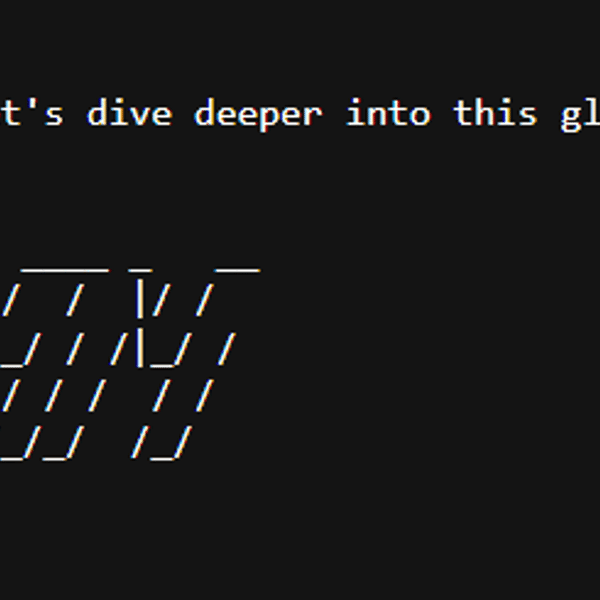 Fartcoin narx bashorati
Fartcoin narx bashorati Bitcoin narx bashorati
Bitcoin narx bashoratiThe Blu Arctic Water Company (BARC) ni qayerdan sotib olsam bo'ladi?
Kriptovalyuta bozorining o'ziga xos o'zgaruvchanligi va murakkabligini hisobga olgan holda, kriptovalyutalarning kelajakdagi narxini aniq bashorat qilish deyarli mumkin emas. Biroq, bozorning siklik tabiati, tarixiy narx tendensiyalari, uzoq muddatli rivojlanish istiqbollari va kengroq qabul qilish potensialiga asoslanib, biz hali ham kelajakdagi narxlar harakati haqida ba'zi umumiy prognozlar qilishimiz mumkin. Shu bilan birga, shuni ta'kidlash kerakki, ushbu prognozlar potensial narx diapazonlari va senariylari haqida tushuncha berishi mumkin bo'lsada, ularga ehtiyotkorlik va shubha bilan qarash kerak. Haqiqiy narxlarning o'zgarishi bu prognozlarga to'liq mos kelishi dargumon va ular faqat bozorning investitsiya salohiyatining taxminiy bahosi sifatida ko'rib chiqilishi kerak.
Ushbu tarkib faqat ma'lumot uchun mo'ljallangan va Bitget tomonidan tarkibda ko'rsatilgan har qanday qimmatli qog'oz, moliyaviy mahsulot yoki instrumentni sotib olish, sotish yoki ushlab turish uchun taklif yoki tavsiyanoma emas, shuningdek investitsiya maslahati, moliyaviy maslahat, savdo maslahati yoki boshqa turdagi maslahat emas. Taqdim etilgan ma'lumotlar Bitget birjasida, shuningdek, boshqa kripto-valyuta birjalarida va bozor ma'lumotlari platformalarida sotiladigan aktivlar narxlarini aks ettirishi mumkin. Bitget kriptovalyuta operatsiyalarini qayta ishlash uchun to'lovlarni olishi mumkin, bu ko'rsatilgan konvertatsiya narxlarida aks etmasligi mumkin. Bitget tarkibidagi xatolar yoki kechikishlar uchun yoki bunday tarkibga asoslangan har qanday harakatlar uchun javobgar emas.
Ushbu tarkib faqat ma'lumot uchun mo'ljallangan va Bitget tomonidan tarkibda ko'rsatilgan har qanday qimmatli qog'oz, moliyaviy mahsulot yoki instrumentni sotib olish, sotish yoki ushlab turish uchun taklif yoki tavsiyanoma emas, shuningdek investitsiya maslahati, moliyaviy maslahat, savdo maslahati yoki boshqa turdagi maslahat emas. Taqdim etilgan ma'lumotlar Bitget birjasida, shuningdek, boshqa kripto-valyuta birjalarida va bozor ma'lumotlari platformalarida sotiladigan aktivlar narxlarini aks ettirishi mumkin. Bitget kriptovalyuta operatsiyalarini qayta ishlash uchun to'lovlarni olishi mumkin, bu ko'rsatilgan konvertatsiya narxlarida aks etmasligi mumkin. Bitget tarkibidagi xatolar yoki kechikishlar uchun yoki bunday tarkibga asoslangan har qanday harakatlar uchun javobgar emas.
Ma’lumot: Trump oilasi so‘nggi oylarda kriptovalyuta loyihalaridan taxminan 620 million dollar daromad topdiGermaniyada ro‘yxatdan o‘tgan Heidelberger Beteiligungsholding kompaniyasi SQD token zaxirasini tashkil etishini e’lon qildiREX-OspreySOL Spot ETF birinchi kunida 33,91 million dollar savdo hajmini qayd etdiAQSH Qimmatli qog‘ozlar va birjalar komissiyasi hali ham Bitcoin, Ethereum hamda XRP, Solana va Cardano kabi altkoinlarni qamrab oluvchi Grayscale ETF’ni tasdiqlamaganTrump Pauellni iste’foga chiqarishga bosim o‘tkazish uchun yangi yondashuvni qo‘llamoqdaBiden saraton tashxisi qo‘yilgandan keyin birinchi muhim nutqini so‘zladi, Yevropa yetakchilari lavozimdan ketganidan so‘ng ham undan maslahat so‘rashda davom etayotganini aytdiSentyabr oyida Fed foiz stavkasini pasaytirish ehtimoli 90 foizdan yuqori, bozorlar bugungi tunda e’lon qilinadigan noishlab chiqarish bandligi ma’lumotlariga e’tibor qaratmoqdaEronning yadroviy dasturi taxminan 1-2 yilga kechiktirildi — AQSh Mudofaa vazirligi Eron yadroviy inshootlarini yo‘q qilish qobiliyatiga yana da’vo qilmoqdaAQSH moliya sanoati guruhi SIFMA SECni kripto kompaniyalarining tokenlashtirilgan aksiyalar uchun istisno so‘rovlarini rad etishga chaqirmoqdaTramp ma’muriyati Ukrainaga ayrim qurol yetkazib berishni to‘xtatdi, bu esa Kongress va ittifoqchilar tomonidan savollarni keltirib chiqardi

